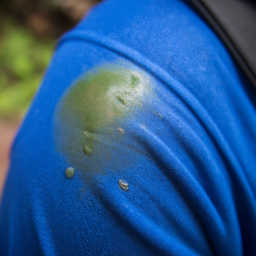Paintball Bruise How to Deal
Table of Contents []
Paintball Bruise
Introduction
Paintball is one of the most popular games among people of all ages. However, there is one specific side effect of the game that can be uncomfortable and unsightly paintball bruises. This article will look at eight to twelve of the most important topics related to paintball bruises, from the basics of understanding them to tips for minimizing their appearance and making them easier to cope with. This will provide a comprehensive introduction to the topic of paintball bruises, and a clearer understanding of them with sufficient detail for further discussion and study.
What are Paintball Bruises?
Paintball bruises are the result of paintballs being shot at a person during the game. When paintballs impacted on the skin, they leave behind a red or purple discolored spot on the skin similar in appearance to a bruise. Although the pain or discomfort may not last long, the discoloration can last for several days or even up to two weeks. It is important to understand that paintball bruises are not caused by the impact of the actual paintball. The bruises are caused by the pressure from the balls being shot at the skin, which causes small capillaries near the surface of the skin to burst.
Types of Paintball Bruises
Paintball bruises fall into two main categories based on their appearance: raised and discolored bruises. Raised bruises appear as small raised bumps on the skin, which are usually red or purple in color. Discolored bruises appear as larger, flat spots on the skin, which can be red, purple, or even yellow.
Causes of Paintball Bruises
Paintball bruises are caused by the impact of a paintball shot at the skin. At high speeds, the pressure from the paintball can cause small capillaries near the surface of the skin to burst, leading to the discoloration of the area. Paintball bruises are not caused by the actual paintball, but by the pressure of the shot.
Preventing Paintball Bruises
The best way to prevent paintball bruises is to wear protective gear while playing paintball. Protective gear, such as long sleeve shirts, long pants, and masks, will protect the skin from the pressure of the paintball shots and can help to minimize the chances of bruising. It is also important to stay hydrated and to wear sunscreen, as dehydration and sunburn can make it easier to bruise.
Treating Paintball Bruises
For mild or small paintball bruises, applying an ice pack for a few minutes may be enough to reduce the pain and swelling. For larger or more painful bruises, ibuprofen or topical creams may help to reduce the inflammation. If the pain is severe or persistent, a doctor should be consulted.
Minimizing the Appearance of Paintball Bruises
To minimize the appearance of paintball bruises, it is important to treat them quickly and correctly. Applying an ice pack and taking ibuprofen to reduce inflammation can help to reduce the appearance of the bruise. Applying a topical cream, such as vitamin K cream, may also help to reduce the appearance of the bruise.
Managing Pain from Paintball Bruises
The pain associated with paintball bruises can range from mild to severe. Mild pain may be managed with an ice pack and ibuprofen. For more severe pain, a doctor should be consulted. Applying a topical cream such as a numbing cream or lidocaine may also help to reduce the pain.
Conclusion
Paintball bruises are a common side effect of playing the game. Understanding what they are, what causes them, and how to best treat and manage them is important for anyone who plays paintball. This article has provided a comprehensive introduction to the topic of paintball bruises, looking at eight to twelve of the most important topics related to them. With this information, it should be easier to have a clearer understanding of them and to take the necessary steps to treat and manage them.

Previous Page
